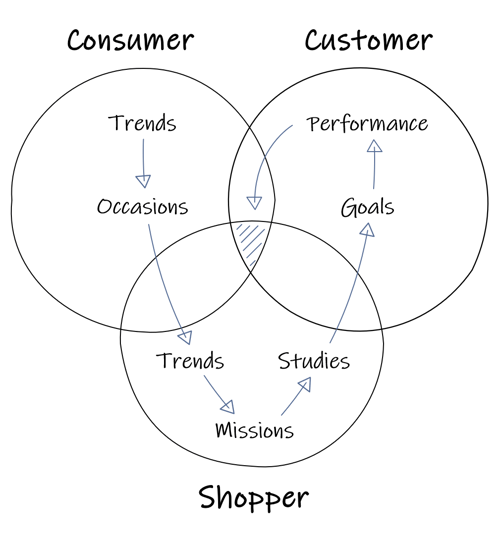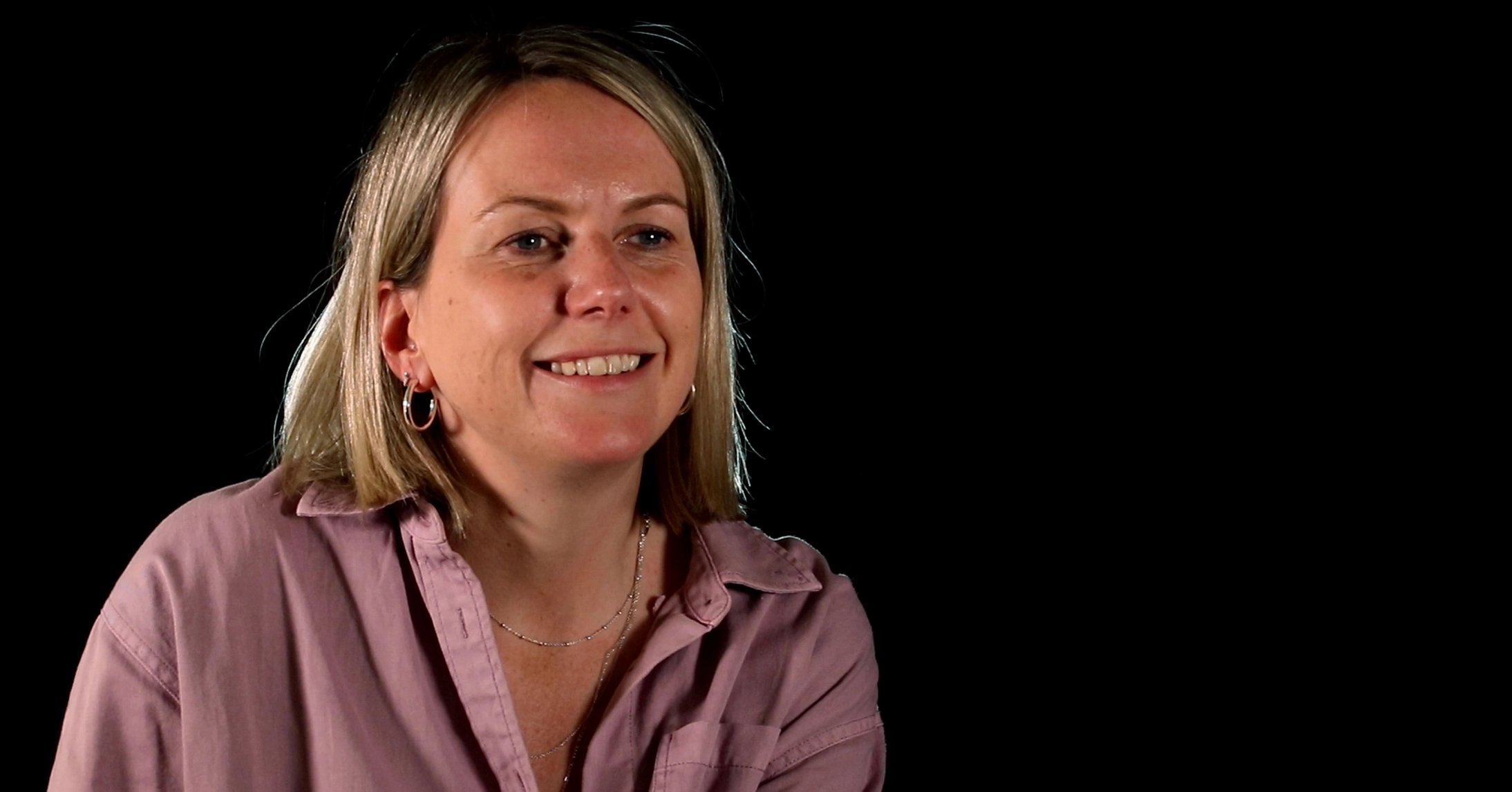Triple Lens Thinking in Category Growth Strategy
One of the key principles we work with on any Category Growth Strategy or category management project is the idea of triple lens thinking. Put simply, this means understanding the 3 key stakeholders: consumers, shoppers and customers – how they behave, what drives that behaviour, and how this might change in the future.
These 3 groups of people – the 3 lenses - are completely interdependent. We know good growth requires a behaviour change, but you can’t drive that change unless you get someone to use a product in a different way; you can’t get them to use that product unless someone buys the product (the shopper); and they can’t buy the product unless someone stocks that product (the customer). So it’s only when we get under the skin of all 3, being truly consumer, shopper and customer centric, that we are able to identify the growth opportunities that will make a difference.

What we often find when working with organisations is that consumer understanding is strong. Brand and insight teams know the people that use their brands inside out. Most people have some awareness of macro consumer trends. And interestingly, recently, we’re seeing more and more organisations develop a deep understanding of the consumer landscape through demand centric growth projects. These projects identify demand spaces within a defined category, combining multiple factors to understand functional and emotional needs on different occasions, in order to understand how different brands can play different roles. The outputs then help organisations to prioritise and optimise their portfolio of brands.
Now, these projects are brilliant, and they also hugely help us in category growth projects because not only do they bring consumer understanding beyond that of the current brand, widening the world we’re looking at and often actually redefining the boundaries of the category, but they also scratch under the surface of what consumers look for from the category and how well these current needs are met. This can then help us to understand areas of strength to build on, as well as potential opportunity spaces that categories can move into.
So demand space models can hugely help us with our consumer lens. But – and it’s a big but - they don’t give us everything.
Firstly, these models are data driven, looking backwards, so missing that critical forward-looking view of how consumer needs and occasions may change, and what will be important in the future. For example, milk category data a decade ago was probably unlikely to estimate the rapid growth of alternative milk.
Secondly, very few consider the shopper, and in many cases even the channels used in each demand space is overlooked.
And thirdly, almost all come from a place of better understanding a portfolio – so while they may help to optimise an organisation’s revenue, they lack the corresponding category growth story to take to customers, so prevent them from getting an aligned joint view of the future.
So in order to identify a compelling strategy that will engage customers, it’s critical to complement those demand spaces to build a category growth story, firstly with a forward view of how the consumer’s world and priorities are changing, but – even more critically – shopper and customer understanding.
Start with the shopper
Depending on the category, up to 76% of purchase decisions are made at the point of purchase. And 100% revenue comes from the shopper – the one that is actually spending his or her hard-earned cash on the product.
These facts alone demonstrate how important it is to understand the shopper… why are they shopping? What drove them to be there? What are they looking for? What are they likely to be influenced by – and not – along the path to purchase? And how is this changing? In a truly omni-channel world where people can go from browsing social media to purchasing something in little more than a click, it’s important we consider how our view of the path to purchase is evolving. If we understand that, it can help us to identify opportunities to make the category more accessible, more engaging - better meeting people’s needs and therefore justifying a purchase. And by the way, while you can spend a lot of money getting to robust and detailed quantified understanding here, you can equally get out to a store. Watch people. Talk to people. Often the best insights come from real life interactions.
Customer centricity
Next, our third lens – the customer, without whose support it’s very difficult to reach shoppers or consumers. Now, most customer teams will have a good understanding of their customer and their big strategic, operational, commercial and ESG priorities. But how far does this customer centricity travel within a business? Do people building brand strategies always know what’s really important to these external partners? Are we projecting forward to see how this might change – legislation, regulation and the need to stand out from the competition are all having significant impact here. While most category growth strategies will ultimately be tailored for a specific customer before being presented, the overall strategy needs to build this aggregated understanding in too – looking across channels and customers to identify what will be important, and what is most likely to make a difference.
At Oxford, every category growth strategy project we work on starts with a deep exploration of consumers, shoppers and customers, incorporating demand space understanding alongside other insights to build a multi-lens view of the world today, and in the future. Only then can we start to understand potential growth opportunities, and only then will we have the right inputs to create a compelling strategy and an engaging story that will excite our consumers, our shoppers and our customers.
Natalie Little
Natalie is a Consultant at Oxford, specialising in helping categories and brands with future-thinking growth plans. Could we help you grow too? Get in touch.

Share this
You May Also Like
These Related Stories

Category in a Cost of Living Crisis

Category Growth Strategy: Putting People at the Heart of Your Plan

.png?width=657&height=57&name=OXFORD%20LOGO%20(1).png)
No Comments Yet
Let us know what you think